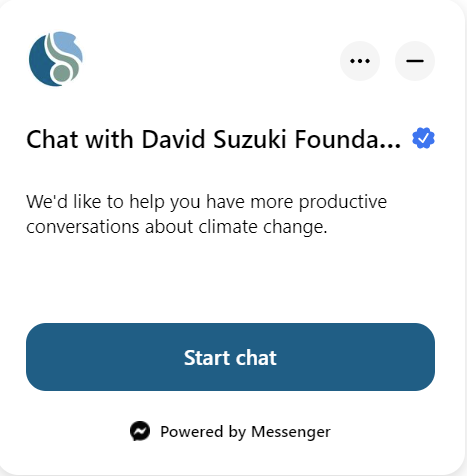Climate Change

Keywords: climate change, conversation, greenhouse gas emissions, CO2, global warming, ask, listen, reflect, agree, share, future-proofing.
What is Climate Change?
According to the United Nations, “climate change refers to long-term shifts in temperatures and weather patterns. These shifts may be natural, such as through variations in the solar cycle. But since the 1800s, human activities have been the main driver of climate change, primarily due to burning fossil fuels like coal, oil and gas. Burning fossil fuels generates greenhouse gas emissions that act like a blanket wrapped around the Earth, trapping the sun’s heat and raising temperatures…There are seven gases classified under GHGs: Carbon dioxide (CO2), Methane (CH4), Nitrous oxide (N2O), Hydrofluorocarbons (HFCs) Perfluorocarbons (PFCs), Sulfur hexafluoride (SF6), Nitrogen trifluoride (NF3). Among these gases, carbon dioxide and methane are the largest contributors …
These come from fossil fuel combustion, eg., using gasoline to drive a car or coal to heat a building. Clearing land and forests can also release carbon dioxide. Landfills for garbage are a major source of methane emissions. Energy, industry, transport, buildings, agriculture, and land use are among the main emitters.” (United Nations, n.d.).
In addition, the Nature Conservancy of Canada states that “climate change is a major threat to wildlife and ecosystems in Canada and around the world. Limiting the amount of warming and adapting to the negative impacts of climate change are critical, not only to protect biodiversity but also to support human health and well-being” (Nature Conservancy Canada, n.d.).
But what’s the difference between climate change and global warming? The David Suzuki Foundation states that “although the terms “climate change” and “global warming” are often used interchangeably, some experts note a difference: global warming is the overall phenomenon whereby global average temperatures are slowly increasing. Climate change is the result of global warming. That is, as global temperatures increase, climatic conditions change in various ways” (David Suzuki Foundation, 2023).
Video credit: What is Climate Change? (Environment and Climate Change Canada, 2021)
Video credit: Friendly Guide to Climate Change – and what you can do to help #everytoncounts (Kniberg, 2017)
How to Talk about Climate Change
So, we know that climate change is an ongoing phenomenon, and it is primarily caused by the decisions humans make. This includes the choices we make regarding horticulture practices used in landscape construction and maintenance. The first step in facing the challenging consequences of climate change is to inform ourselves and select adaptive and mitigative strategies to apply in our daily horticulture work—and that starts here, with you! Another essential task is communicating greener and more sustainable landscape construction and maintenance practices to students and clients.
So, how can we navigate through challenging conversations about climate change and bring the reality of climate change into classrooms? Equally important, how can we prepare students for conversations with employers, suppliers, or customers about the impacts of climate change?
The David Sukui Foundation recommends nine (9) essential resources for climate change conversations. This module includes two examples from the David Suzuki Foundation’s resources on how to talk about climate change; however, a full list of resources on how and why to talk about climate change can be found by clicking on this blue link.
Climate Change Conversation Resource: Conversation Cheat Sheet

Photo by Karin Tamerius.
Climate Change Conversation Resource: How to Turn Climate Anxiety into Action
Video credit: How to turn climate anxiety into action (TEDWomen, 2019).
Teaching and Learning Examples for Instructors
Use a flipped classroom teaching strategy and ask students to prepare for an in-person climate conversation by first using an online resource in advance of class, such as the David Suzuki Foundations CliMate bot. Then, during in-person class, briefly review the topic of climate change and ask students to volunteer to roleplay as stakeholders in a climate conversation involving a landscape construction or maintenance project.
“Introducing CliMate, your climate conversation coach
This fun, simple chatbot on Facebook Messenger will teach you how to stop arguing and start understanding people. In a guided practice conversation, you’ll get to choose responses from a set of options, and CliMate will provide insight into the reaction your responses might elicit.
We know that conversations about climate change can bring up all sorts of emotions, like frustration, despair, anger, and embarrassment. CliMate will help you cultivate empathy and keep your conversations productive. It’s also sure to make you chuckle, especially if you’ve tried having these sorts of conversations already.
This isn’t about winning an argument; it’s about learning to have productive conversations based on common ground and shared values. CliMate is rooted in science. The approach is based on the work of Karin Tamerius of Smart Politics. Drawing on expertise in social and political psychology and extensive experience with online dialogues, she developed a five-step method to help people have difficult conversations. While CliMate will help you have less polarized conversations about climate change, it can also be useful for any potentially divisive conversation topics”. (David Suzuki Foundation, 2023).
Reflect

Please use the following questions to guide your reflection:
- How do human activities contribute to the release of greenhouse gases into the atmosphere, and what are some ways that we can reduce our carbon footprint and mitigate the impacts of climate change?
- Describe your personal views of climate change and explain the ways that your actions contribute to climate change or aim to reduce the impact of climate change.
- What strategies can be effective in communicating about climate change with individuals who may have different perspectives or levels of knowledge on the issue?



Feedback/Errata